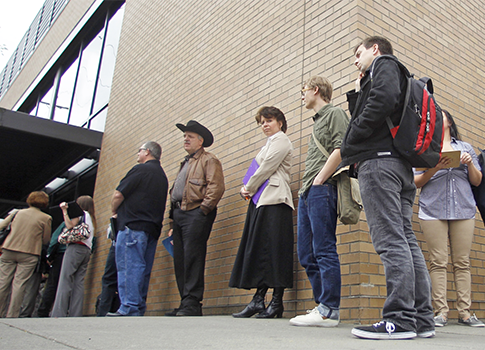There were 94,708,000 Americans not participating in the labor force in May, an increase of 664,000 individuals from the previous month, according to data from the Bureau of Labor Statistics released Friday.
The figure for "Americans not in the labor force" counts individuals who do not have a job and did not actively seek one in the past four weeks.
The labor force participation rate, which is the percentage of the population that has a job or actively looked for one in the past month, declined from 62.8 percent in April to 62.6 percent in May.
Similarly for women 16 years and over, the number of those not active in the labor force reached a record high. There were 56,725,000 women not in the labor force in May, an increase of 253,000 from the previous month. Their participation rate declined from 56.8 percent in April to 56.7 percent in May.
There were 6,430,000 Americans working part-time in May, but not by choice. This number increased by 468,000 over the month. According to the bureau, involuntary part-time workers are "persons who indicated that they would like to work full time but were working part time (1 to 34 hours) because of an economic reason, such as their hours were cut back or they were unable to find full-time jobs."
The unemployment rate for all Americans declined from 5.0 percent in April to 4.7 percent in May. This measure does not account for those individuals who have dropped out of the labor force. The unemployment rate simply measures the percent of those who did not have a job but actively sought one over the month.
The "real" unemployment rate, otherwise known as the U-6 measure, was 9.7 percent, which remained steady from the previous month. Some Democrats such as Sen. Bernie Sanders (I., Vt.) and Federal Reserve Chair Janet Yellen have said that this measure is more representative of the labor market because it accounts for discouraged workers and those working part time instead of full time for economic reasons.
"Today’s dismal jobs number is reflective of the softness in the underlying economy, which seven years after the Great Recession ended still isn’t strong enough to produce robust job creation," said Ed Rensi, former CEO of McDonald’s and member of the Job Creators Network, a nonpartisan organization. "To truly turbocharge the economy, we must address the barriers that are holding the economy’s key drivers—small businesses—back from hiring: over-taxation, over-regulation, and lack of access to credit."
